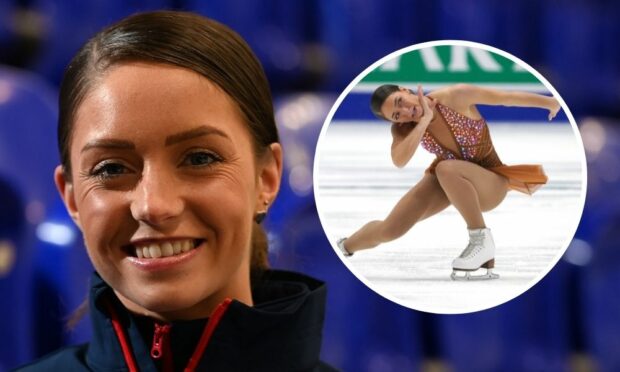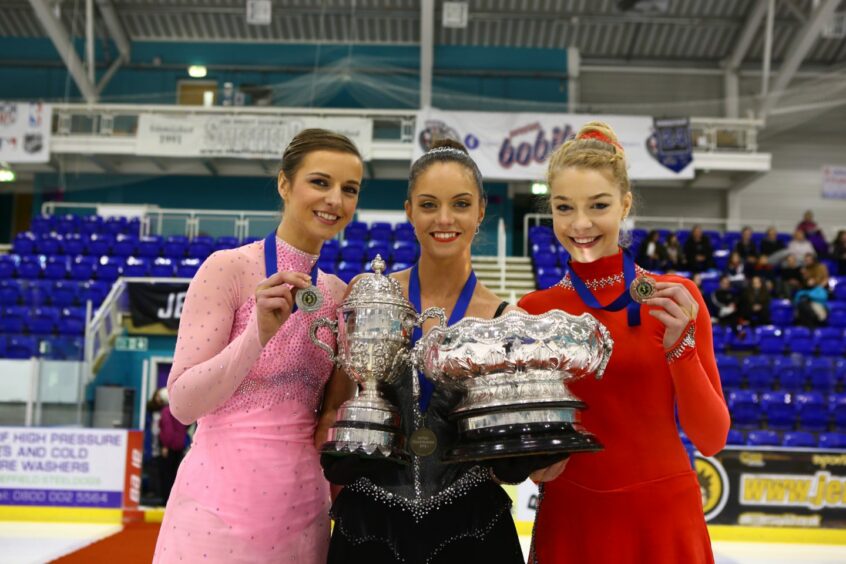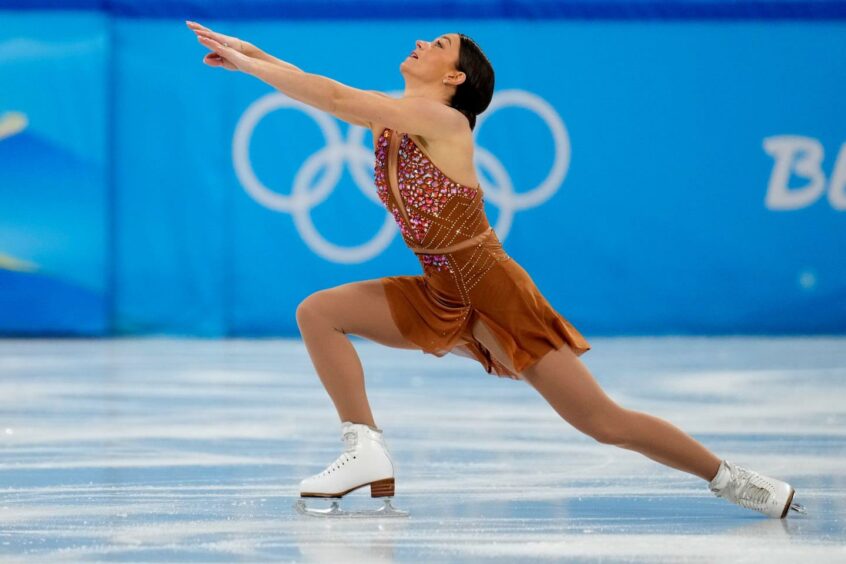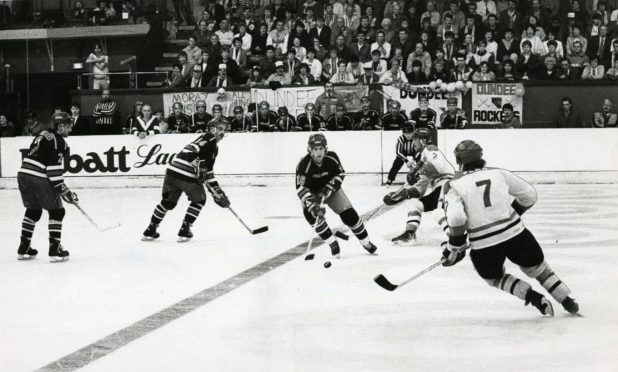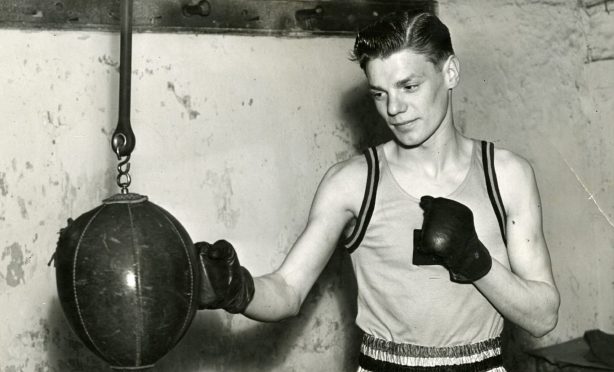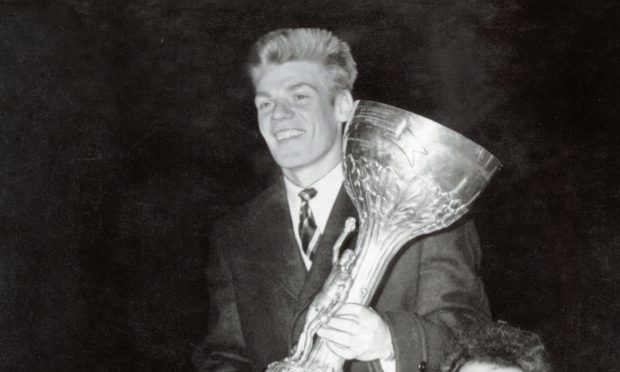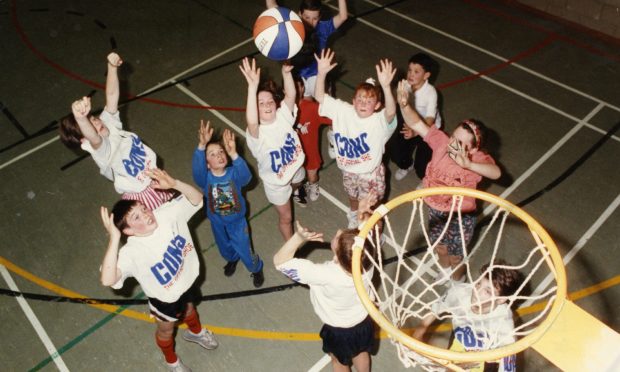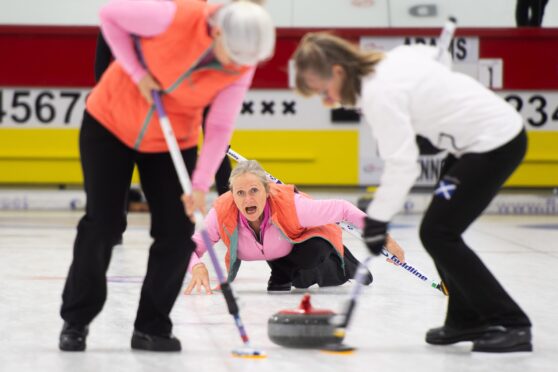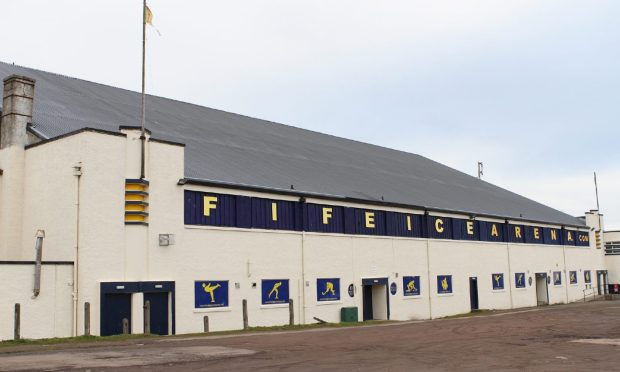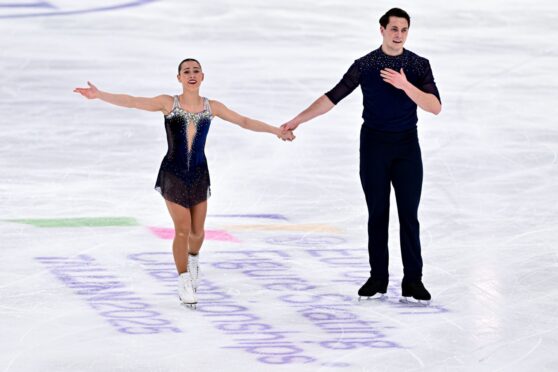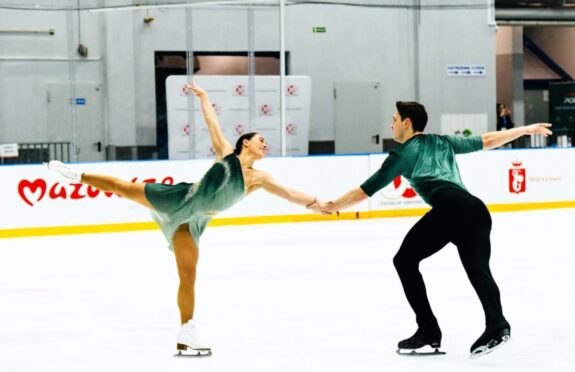Dundee figure skater Natasha McKay has lived out her sporting dream by making her debut at the Winter Olympics.
The 27-year-old was one of 30 athletes to have qualified for the women’s individual event at Beijing.
Courier Sport looks back at Natasha’s road to China and assesses expectations ahead of a competition that has become a worldwide news story as well as a sporting one.
What was starting point of Olympic journey for Natasha McKay?
Just over 20 years ago, a six-year-old Natasha was invited to a birthday party at Dundee Ice Arena and instantly fell in love with the idea of becoming a skater.
It took a year before her parents were persuaded this wasn’t going to be a passing fad, though, and investing in a set of skates and a dress would be a worthwhile expense.
One that happened, Natasha has barely been off the ice since.
Has coming from Dundee been a stroke of luck for Natasha?
It certainly has in recent years.
Since husband-and-wife coaching team Simon and Debi Briggs based themselves at the ice arena, it has become the unofficial elite hub for British figure skaters.
The team from Dundee regularly returns from the national championships in Sheffield laden with medals.
The senior ladies event, in particular, has been dominated by Dundonians.
Natasha has won five British titles in a row and Karly Robertson finished first before that and has reached double figures for runners-up spots.
These days, the draw of working with Team Briggs (Natasha will be their third Olympian) attracts young hopefuls to move to Dundee from across the country.
It hasn’t always been the case, though.
Back in 2008 when Natasha was 13, she relocated to Coventry for a few years.
Athletes in minority sports don’t get a silver spoon, do they?
Indeed they do not.
Natasha juggles two jobs to help her finance her career – in retail and coaching young skaters.
Then there’s the regular 5am training slots to fit in as well as the strength and conditioning work needed to keep her at the top of a sport that combines artistry with physical power.
If that wasn’t enough to contend with, Covid-19 proved to be a huge disruptor.
Thoughts of quitting as a competitive skater crossed her mind.
Natasha took herself outside onto frozen puddles to practice and, at one point, she moved to Bradford to get ice-time until the Scottish Government relaxed coronavirus restrictions.
Another day another puddle❄️⛸ #ice #frozen #figureskater #outdoors pic.twitter.com/N7PPacVwb3
— natasha mckay (@NatashaaMckay) January 7, 2021
“I was off the ice for five months, which for me was a really long time,” she said.
“I’m usually off the ice only for two weeks of the year, so to be off for five months was crazy and just really hard to take, especially because it was six months before the Olympic qualifiers.
“That time was really hard. I just put everything into my off-ice training and just kept everything going and just didn’t stop, because if I stopped then I knew that would be it for me.”
What sort of pedigree do Britain have in figure skating?
The glory days for the sport have long since passed. You have to go back to the 70s and 80s for those.
We're celebrating Jayne Torvill's birthday by taking a trip down memory lane to Sarajevo 1984.
Torvill and Dean + Bolero = 🥇 pic.twitter.com/dnEJPhuYZW
— Team GB (@TeamGB) October 7, 2017
John Curry, Robin Cousins and Torvill and Dean all became household names on the back of their gold medals but figure skating is now more about celebrities falling flat on their faces and panto baddie panellists on ITV’s Dancing on Ice than it is competitive glory.
Why was there controversy hanging over the event Natasha competed in?
It wouldn’t be an Olympics without a big drugs story or, more specifically, a Russian drugs story.
Kamila Valieva, favourite to take gold, was told she could compete after sport’s highest court ruled “exceptional circumstances” meant the 15-year-old should not have been provisionally suspended for a failed drugs test.
As much as I love to watch @Olympics skating, Valieva ruined it for herself and for all other competitors in this event. Is anyone besides Russia going to feel that she actually won, if she does place? #ROC Viewership at all time low and yet doping continues to be the headline.
— Sandra Barr 🚶♀️🎣🐕🦺 (@sjrose99) February 14, 2022
The Court of Arbitration for Sport pointed to age and issues around timing of the test result announcement in the reasons for its ruling.
The eyes of the world were upon her event but Natasha had to block out all the peripheral drama.
“I’m focused on what I’m doing but there’s definitely a lot of attention,” she said, after witnessing the media interest in the ladies’ practice sessions.”
How did Natasha perform and what was her score?
Natasha was the eighth skater to take to the ice in her event on Tuesday morning (February 15).
She put on a brave showing despite an early tumble in her routine as the Dundonian tried a triple loop, double toe loop.
She slipped upon landing but quickly bounced back on to her skates and completed the rest of her performance.
Natasha was awarded a score of 52.54 by the judges, with a one point deduction for her slip – about the best she could hope for having fallen.
“This means everything to me,” she said prior to her routine. “I’ve worked my whole career to get to this point.
“I’m finally here and accomplishing what I’ve always wanted to do with my life and living out my dreams.”
